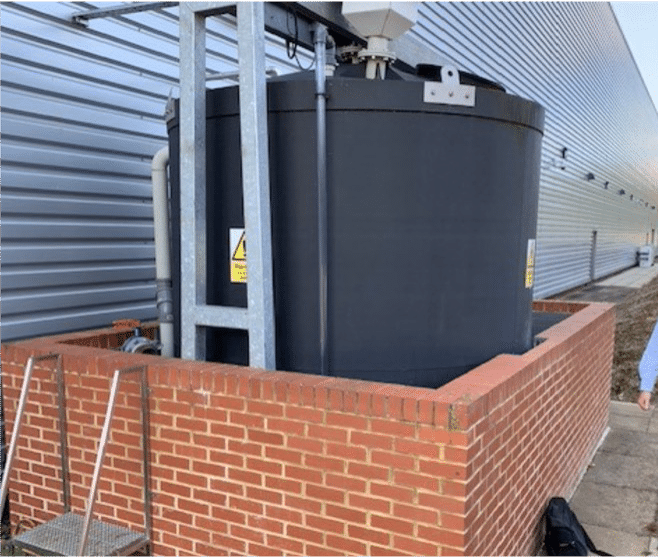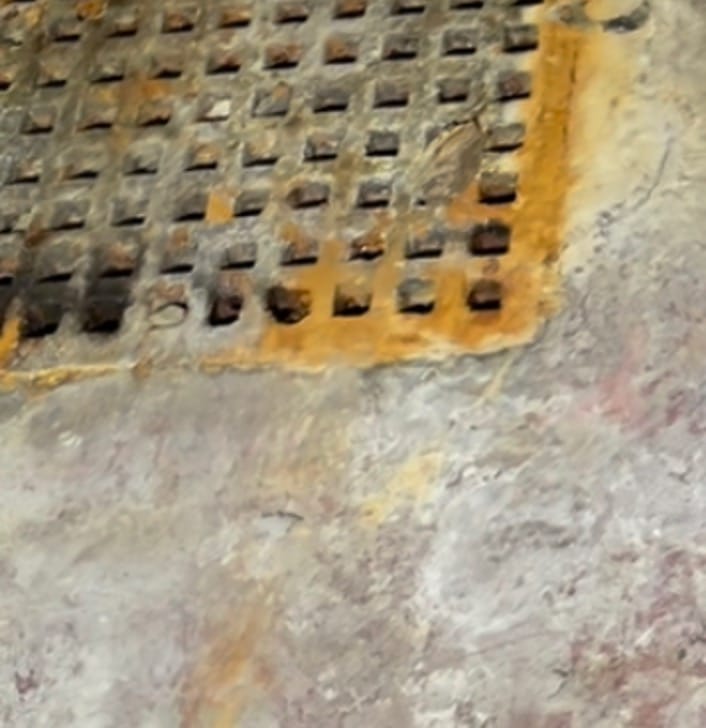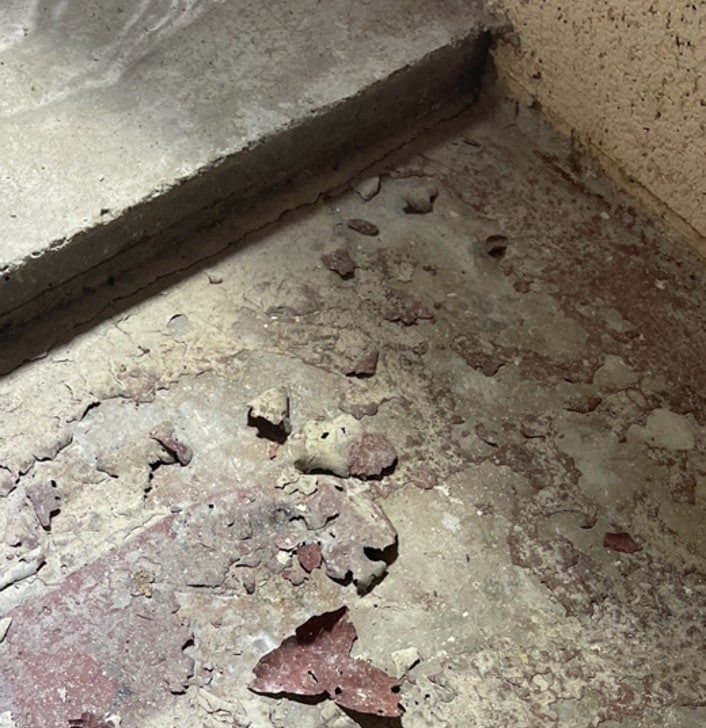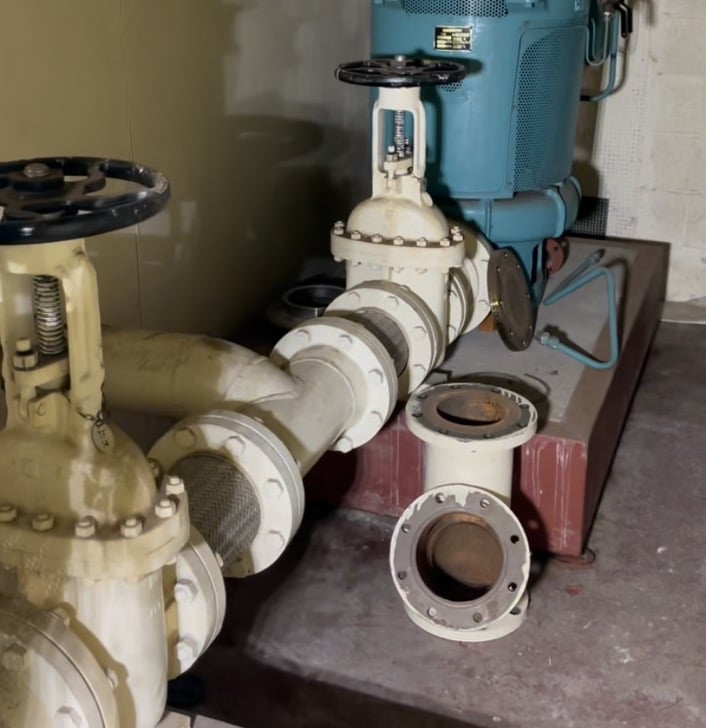Bunds are intended to act as secondary containment vessels to prevent the spread of large quantities of harmful or otherwise undesirable chemicals or biological liquids. They are a form of secondary containment designed to provide “defence for preventing, controlling or mitigating major hazards events” according to the UK’s HSE advice on bunding.

UK Environmental Agency regulations require commercial facilities housing volumes in excess of 200 L and domestic facilities housing 2500 litres to have tank bunding that complies with the ‘control of pollution regulations‘.
Bunds installed at industrial production and processing facilities commonly contain the following chemicals.
| Classification | Substance |
|---|---|
| Fuels & Oils | Petrol, diesel, motor oil |
| Food Ingredients | Vegetable oils, dairy, soft drinks |
| Acids | Sulphuric acid, hydrochloric acid, lactic acid, nitric acid |
| Alkalis/Bases | Sodium hydroxide, sodium carbonate, potassium hydroxide and potassium carbonate. |
| Water | Wastewater, treated water, process water |
| Chemicals | |
| Solvents | Ethanol, acetone, methanol, toluene |
They are an important part of pollution prevention and control for businesses. Bunds are installed both inside and outside plant buildings depending on the location of processing equipment. Bulk storage tanks are often located outside, whilst chemical reactors, bioreactors and other processing vessels requiring manual operation are commonly located inside with accompanying bunds. Bunds act as a backup containment system, should the primary containment system – namely the tank surface and tank lining fail. Reasons for primary containment tank failure have been detailed elsewhere.
Bund Design
Adequate design of a bund is as important as the bund itself. A historical assessment of failed bunding systems provides the basis for careful design.
• Floreffe, Ashland Oil (1988): 4 million gallon tank of fuel oil released a surge wave that swamped the bunded area. This lead to the damage of another tank and a $4.6 million fine.
• Iowa (1997): 1 million gallon tank of ammonium phosphate failed

• Michigan (1999): the rupture of a 1 million gallon tank of ammonium polyphosphate. Lead to damage of an additional 3 tanks.
• Ohio (2000): 1 million gallon liquid fertilizer tank ruptured, damaging nearby tanks. This caused a wave that penetrated the concrete bund, forcing 5 rigs into the nearby river.
• Ohio (2000): tank containing 1.5 million gallons of ammonium phosphate ruptured. Caused three other tanks to leak, overflowing the bund leading to the contamination of 450,000 gallons water that would have been sent for drinking water.
Bund Design Requirements
Bund design according to the UK Government for pollution control and secondary containment should meet certain design requirements. This is to contain hazardous chemicals should a storage tank leak or suffer a catastrophic breach. Critical requirements stipulate:
- The total volume of the number of storage tanks in a single bund does not exceed 60,000 cubic meters
- Incompatible chemicals that are hazardous when in contact should have separate bunds
- Accumulated rainwater is removed regularly
- Storage tanks have individual bunds
- Bund capacity is :
- at least 110% of the capacity of storage containers over 205 litres capacity to accommodate foaming and surges
- at least 25% of the capacity of storage containers up to 205 litres capacity
- Container or tank contents should not contaminate surface water or groundwater. According to the Environmental Agency, bunds should be located a minimum of:
- 10 meters from watercourses, open drains, gullies, unsurfaced areas or porous surfaces
- 50 meters from wells, springs or boreholes
Bund wall and floor dimensions
Bund dimensions require judgment but are project-specific. A balance between low wall heights (1 – 1.5 m) aid emergency worker access, but risk chemical contamination if a pressurised vessel leak occurs at a tank position higher up or if a sudden release of high volume liquid occurs and causes an overflow. On the other hand, those designing higher bund walls should account for the possibility of the tank or vessel floating in the event of a leak. Other bunding guidelines for Ireland also stipulate either 110% capacities or 25% of the total volume of the substance stored.
More detail on bund design, capacities, shapes and structural considerations is available from the NBS’s guidelines for bund construction. Modelling of spills from above-ground storage tanks can provide the basis for more effective containment.
What are bunds made from?
Traditionally, most bunds are made from concrete and mortar. The purpose here is to provide shaping and structural support for chemical containment. However, a major limitation of concrete, brick and mortar is the capacity to withstand exposure to chemicals over prolonged periods; they are porous, brittle and prone to degradation – even when combined with polymers.
It is common to see chipping, cracking and flaking over time, which promotes ingress into the bund structure, leading to the potential release of harmful chemicals.
As such, an effective bund lining – a coating to protect the internal surface of the bund – is needed.
Lining and re-lining a bund: choosing an effective bund lining system
Concrete and mortar bunds are “likely to need a rendering or coating on the internal surfaces of the base and walls to make them impermeable”, according to the UK government’s guidelines for oil storage.
Such internal coatings are commonly referred to as ‘linings’. Linings are coatings that cover the internal surfaces of a structure. making it resistant to chemical erosion via a protective coating. A range of bund linings exists that can be applied by specialist bund lining contractors. Indeed, a bund liner will provide enhanced protection to the underlying substrate in the form of a chemically resistant barrier, such that if damage to an oil storage tank, for instance, or one that contains a hazardous material like sulphuric acid occurs, the spillage would be contained and easier to clean up.
The example below shows the installation of a chemically resistant vinyl ester bund lining. This was at an outdoor facility designed to contain nitric acid and sodium hydroxide at various points around the site. Vinyl ester demonstrates exceptional resistance to a range of chemicals. Combined with glass fibre reinforcement, it can be tailored towards a range of chemicals.
This second example below shows a standard indoor bund lining being constructed to contain fuel leaks from processing equipment. Fibreglass is versatile, widely applicable to most applications and cost-effective.
The limited containment capability of concrete-like substrates necessitates the use of coatings with chemical resistance to provide effective surface protection. When applied to reinforced concrete, even in small quantities (4 mm), resins create a seamless, impervious and mechanically strong barrier that is robust and durable and superior to the existing concrete structure that would not have a protective coating system.
Signs your bund needs repair or refurbishment
Bunds that are showing signs of degradation or wear and tear need careful assessment and in a lot of cases repair and refurbishment. The table below lists the signs and causes that indicate a possible loss of bund integrity.
| Sign | Cause |
|---|---|
| Vegetative growth | The growth of plants, shrubs and other types of vegetation is a sign that cracks and moisture have penetrated the bund wall since the roots from such vegetation have entered the walls, corners and all floors of the bund. |
| Cracked or damaged walls | A loss of integrity of the bund wall typically occurs in the form of cracks. This can occur from physical impact or from age-related breakdown. |
| Contaminated walls and floors | Staining from chemicals or biological organisms like fungus is indicative of a loss of wall integrity, such that it has become porous and allowed such material to become entrapped. This suggests the potential for, or the presence of, penetration into the bund wall, further weakening its integrity. |
| Unsealed joints & gaps | Instances, where pipes or other outlet features have been inserted into the bund sometimes neglect effective waterproofing around the joint-bund wall interface. This presents the opportunity for leaks to form. |
Any vegetation should be removed and destroyed to prevent further regrowth. Cracks and damaged regions should be repaired to maintain bund structural integrity. The surface should be sand or grit blasted back to remove the outer, porous region of the bund layer. It should be dehydrated to remove any remaining moisture prior to the application of protective lining. Concrete sealing around and joints, junctions and gaps are advisable. These areas should be further protected with a seamless lining.
What types of bund linings exist?
The chemicals industry has developed a range of protective linings that hold up against aggressive chemicals and effectively contain liquids. Strandek is well versed in the application of these secondary containment lining systems. We offer a bund lining service that uses resins like epoxies to polyurethanes, types of vinyl and polyesters that can be used to create an effective chemical bund. Whilst effective in their own right, these resins are further enhanced through the inclusion of aggregates and textile backings to create ‘composite’ structures. These ultimately enhance the properties of the resin, increasing its thickness whilst also providing structural attributes unattainable to the original resin.
A classic example includes fibreglass (GRP), a composite that saturates glass fibre mat in polyester resin. Once hardened, this material is incredibly strong, impervious to liquids, resistant to chemical attack and possesses a degree of flexibility. So should the primary containment vessel fail, it would offer excellent chemical resistance.
Taking a closer look at fibreglass (GRP) as a bund lining
A range of resins capable of providing comprehensive protection from chemical, physical and biological stressors. A large proportion of this is tailored towards the containment of chemicals that are hazardous and toxic. These typically range from vinyl esters to epoxies, with a portion of these (polyesters and vinyl esters) being combined with glass fibre reinforcement materials to create fibreglass.
Standard fibreglass (GRP) linings are made from polyester resin, a liquid that transitions into a solid and a glass fibre mat backing. The production process involves saturating glass fibre mat (chopped strand mat) in polyester resin. A catalyst is added to harden the resin, such that it cross-links, where trillions of individual molecules link together, so the entire structure becomes one single block. Its characteristics are further enhanced by the glass fibre backing, hence the term ‘fibreglass’. This glass fibre backing adds a degree of flexibility to the resin, creating a composite that is not only hard but also flexible with added abrasion resistance. An effective lining system, fibreglass will protect the existing structure and provide excellent seam strength that rivals steel. Furthermore, the fibreglass laminate provides exceptional bonding to concrete and mortar, often in addition to a resin primer that penetrates into the concrete and facilitates bonding.
Contact a bund lining specialist
Bunds require a level of ongoing maintenance, inspection and repairs to ensure regulatory compliance and functionality. At Strandek, we have decades of experience in bund lining. These linings are corrosion-resistant and resistant to UV light. So whether you need protection for fuel storage or your largest tank, we have a solution for you. If you would like to arrange a survey to assess the condition of your existing bund, call us on 01633 250652 or submit an enquiry online.



